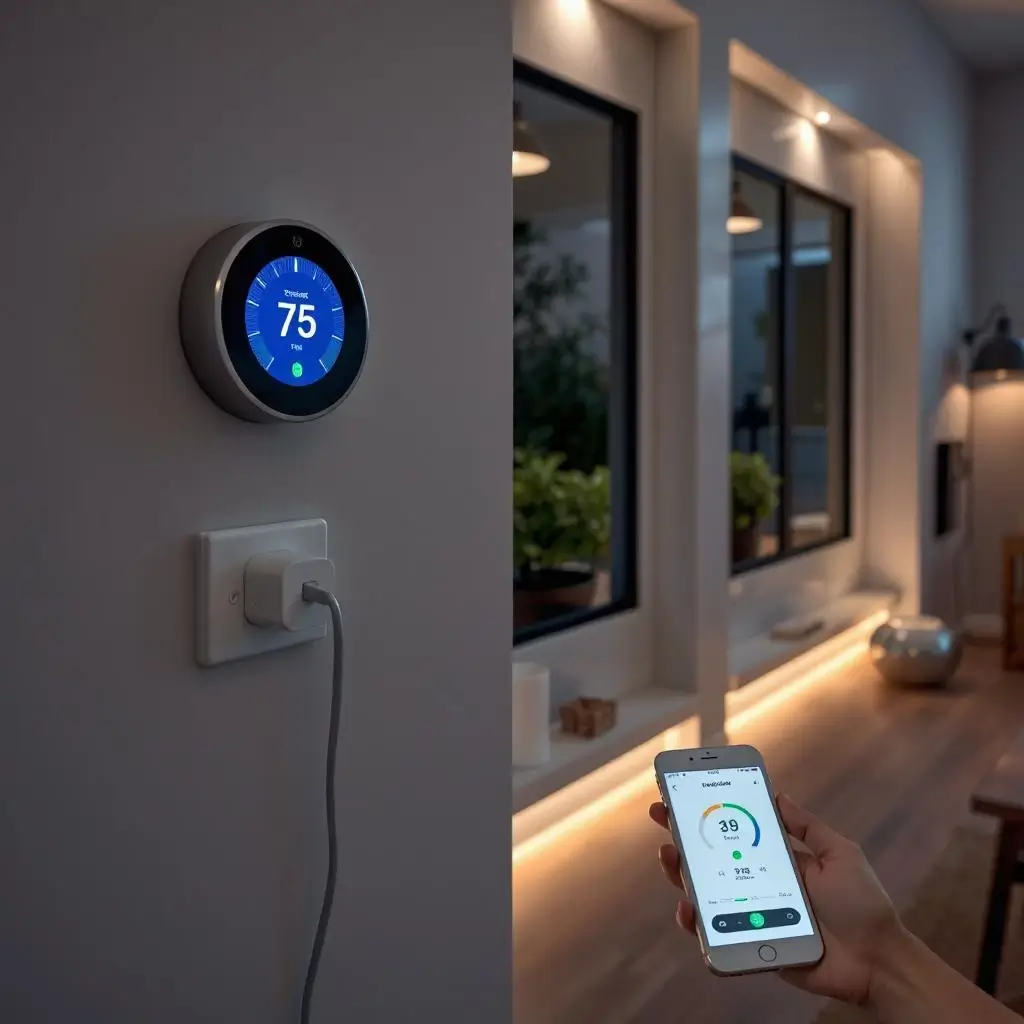1. Introduction
Smart home technology is revolutionizing the way we interact with our living spaces. From voice-controlled assistants to energy-efficient appliances, smart devices are helping homeowners reduce their daily energy consumption while enhancing convenience.
As energy costs continue to rise and climate change becomes a global concern, homeowners are increasingly looking for sustainable solutions. Traditional energy use patterns often result in waste, but with the advent of smart technology, it is now possible to optimize electricity and reduce unnecessary consumption. This article explores various smart home devices and how they contribute to energy savings.
2. The Role of Smart Home Devices in Energy Efficiency
Smart home devices optimize energy use through automation, AI learning, and real-time monitoring. Here’s how they contribute to energy efficiency:
Automation: Smart devices can be programmed to operate only when needed, reducing wastage.
AI Learning: Many devices, like smart thermostats, learn user preferences and optimize performance accordingly.
Real-Time Monitoring: Homeowners can track energy usage and adjust their habits to reduce costs.
Carbon Footprint Reduction: By optimizing electricity consumption, smart homes contribute to a lower environmental impact.
3. Smart Thermostats: Optimized Climate Control
Smart thermostats are among the most impactful energy-saving devices. They help reduce heating and cooling costs through:
AI Learning: Adapts to household routines and adjusts temperatures accordingly.
Remote Access: Users can control their HVAC system via smartphone apps.
Geofencing: Adjusts temperature when residents leave or enter the home.
Estimated Savings: 10-20% reduction in heating and cooling costs.
Popular Brands: Google Nest, Ecobee, Honeywell Home.
4. Smart Lighting Systems: LED Efficiency & Automation
Lighting accounts for a significant portion of household energy consumption. Smart lighting systems enhance efficiency through:
LED Technology: Uses up to 80% less energy than incandescent bulbs.
Motion Sensors: Lights turn on/off based on room occupancy.
Scheduled Automation: Lights adjust brightness based on time of day.
Estimated Savings: Up to 80% reduction in lighting energy consumption.
Recommended Brands: Philips Hue, LIFX, Wyze Bulbs.
5. Energy-Efficient Appliances: Smart Power Use
Modern appliances with smart capabilities reduce energy consumption through optimized usage. Examples include:
Smart Refrigerators: Adjust cooling levels based on stored food.
Washing Machines: Optimize water and detergent use per load.
Dishwashers: Reduce water heating consumption through efficiency settings.
Estimated Savings: 20-50% reduction in energy bills.
6. Smart Power Strips & Plugs: Eliminating Phantom Energy Loss
Even when turned off, many devices continue to draw power. Smart plugs and strips:
Monitor Idle Power Use: Automatically cut power to unused devices.
Remote Control: Users can switch devices on/off via an app.
Estimated Savings: 5-10% reduction in total home energy use.
Popular Models: TP-Link Kasa, Belkin WeMo, Gosund Smart Plug.
7. Home Energy Monitors: Real-Time Consumption Insights
Smart energy monitors help homeowners track and optimize electricity use by:
Identifying High-Energy Appliances: Providing real-time energy tracking.
Analyzing Usage Patterns: Suggesting ways to reduce consumption.
Best Options: Sense Energy Monitor, Emporia Vue, Neurio.
8. Smart Water Management: Efficient Water Usage
Water-efficient smart devices include:
Smart Sprinklers: Adjust irrigation based on weather data.
Leak Detectors: Prevent water waste by identifying leaks early.
Estimated Savings: Up to 30% reduction in water bills.
9. Smart Window Shades: Passive Energy Savings
Automated window shades help regulate indoor temperatures by:
Blocking Excess Heat in Summer: Reducing the need for air conditioning.
Retaining Heat in Winter: Lowering heating requirements.
Estimated Savings: Up to 15% reduction in HVAC energy consumption.
Popular Brands: Lutron Serena, Somfy Smart Blinds.
10. Cost vs. Savings: Is It Worth the Investment?
| Device Type | Upfront Cost | Estimated Savings | Payback Period |
| Smart Thermostat | $100-$250 | 10-20% reduction in heating/cooling | 1-3 years |
| Smart Lighting | $10-$50 per bulb | 80% energy savings | Immediate |
| Smart Appliances | $500-$2,000 | 20-50% reduction | 3-5 years |
| Energy Monitor | $100-$300 | Identifies inefficiencies | Varies |
11. Challenges & Considerations
Compatibility Issues: Some devices may not work with older home systems.
Data Privacy: Internet-connected devices pose cybersecurity risks.
Upfront Costs: Initial investment can be high but is offset by long-term savings.
12. Future of Smart Home Technology
AI-powered automation will further optimize energy use.
Integration with renewable energy sources like solar panels.
More affordable smart devices as technology advances.
13. Comparison Table of Smart Home Devices
| Device | Key Features | Estimated Energy Savings | Best For |
| Smart Thermostats | AI learning, remote control | 10-20% | All homes |
| Smart Lighting | LED, motion sensors, automation | Up to 80% | Energy-conscious users |
| Smart Appliances | Water/electricity-saving tech | 20-50% | Large households |
| Smart Power Strips | Prevents standby power drain | 5-10% | Tech-savvy users |
| Home Energy Monitors | Real-time tracking | Identifies inefficiencies | Budget-conscious users |
14. Conclusion
Smart home devices offer a practical way to lower daily energy consumption. Whether through optimized climate control, efficient lighting, or intelligent power management, they significantly reduce electricity bills and carbon footprints.
Homeowners looking to cut energy costs and embrace sustainability should consider investing in smart technology. With government incentives and ongoing advancements, smart home devices are an investment in both financial savings and environmental conservation.
By integrating these devices, households can move towards a more energy-efficient and eco-friendly future.
Disclaimers:
Savings estimates vary based on usage patterns and location.
Some smart devices may require professional installation.
Privacy risks exist with connected devices; users should secure their networks.
Author: Dipika Kumari
Publication Date: 27-03-2025
Email: [email protected]
